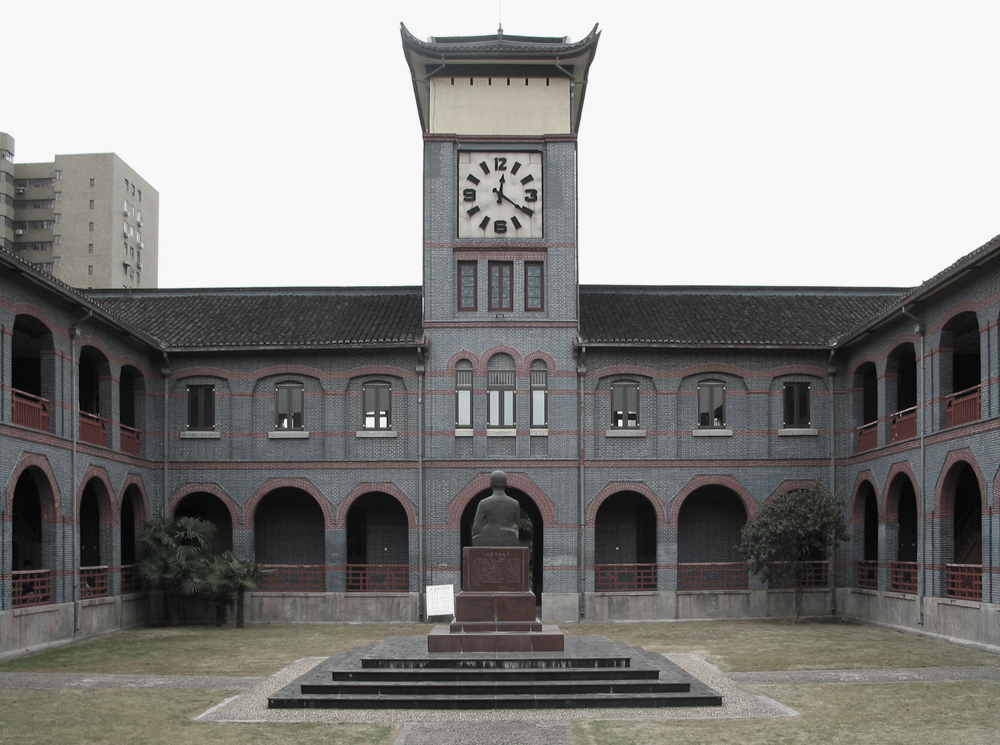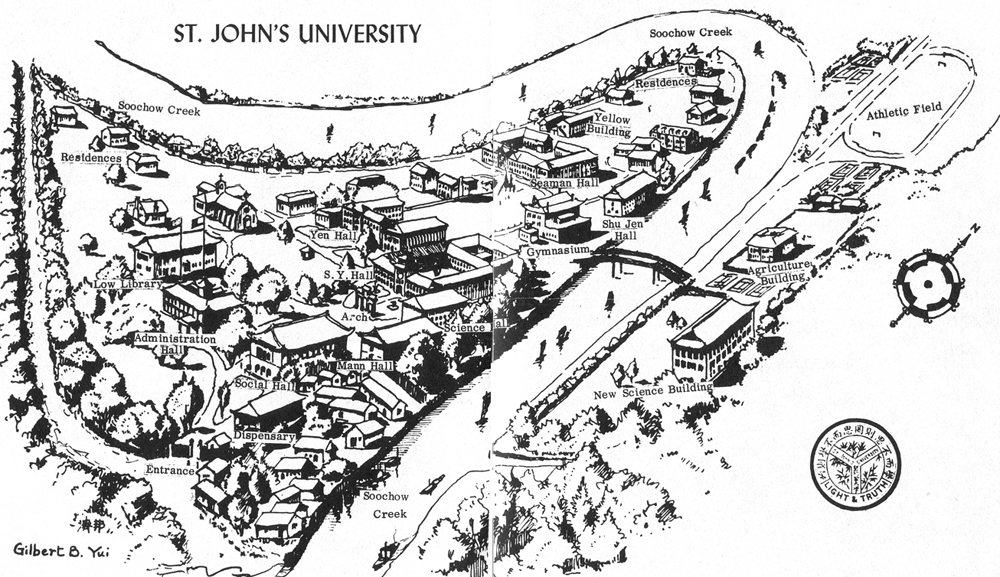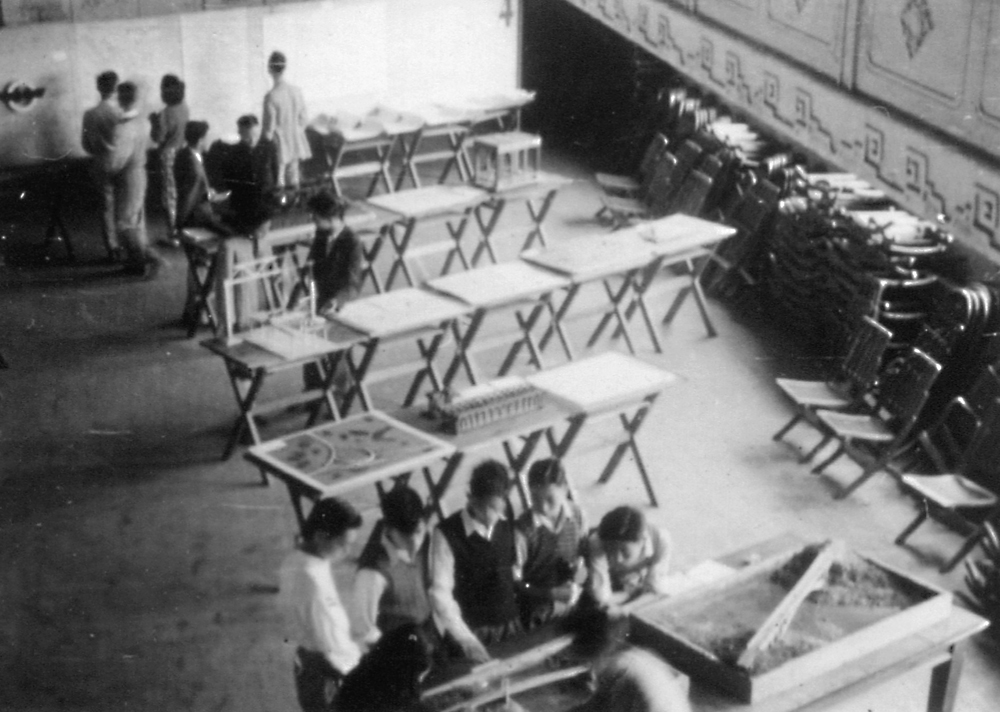Archive
St. John’s University
- St. John’s University
- University / Higher Education Institute / Research Institute
In the first half of the 20th century, St. John’s University in Shanghai was an important Protestant university under American leadership. During the 1940s, German emigrants also taught there, after British and American university lecturers were interned in the wake of the Japanese attack on Pearl Harbor.
Word Count: 48
St. Johns University, 188 Jessfield Road, Extra Settlement Road, Western Settlement Extension (now Wanhangdu Lu, Changning Qu) Shanghai

St. John’s University S.Y Hall with clock tower, photography (© Eduard Kögel 2004). 
Former administration building of St. John’s University, photography (© Eduard Kögel 2004). 
Mary Lamperton. St. John’s University Shanghai. New York, United Board of Christian Colleges in China, 1955. An overview of St. John’s University around 1950. 
Student exhibition put on by Richard Paulick’s architecture class, photography, 1947 (© private archive, courtesy of Natascha Paulick). 
Richard Paulick, letterhead 1948, photography (© private archive, courtesy of Natascha Paulick). Lamperton, Mary. St. John’s University Shanghai. New York, United Board of Christian Colleges in China, 1955.
Hou, Li. "Design und Stadtplanung an der St. John’s-Universität.", Bauhaus Shanghai Stalinallee Ha-Neu. Der Lebensweg des Architekten Richard Paulick 1903–1979, edited by Flierl, Lukas Verlag, 2020, p. 146–157.
"Michael Klaus Mehnert und die Zeitschrift The XXth Century." Exil Shanghai 1938–1947. Jüdisches Leben in der Emigration, edited by Armbruster,Georg, et al., Hentrich & Hentrich, 2000, p. 233–253.
Kögel, Eduard. Zwei Poelzigschüler in der Emigration: Rudolf Hamburger und Richard Paulick zwischen Shanghai und Ost-Berlin (1930–1955), University of Weimar 2006, doi: https://doi.org/10.25643/bauhaus-universitaet.929. Accessed 3 March 2021.Word Count: 98
- 1905
- 1950
Richard Paulick, Lothar Brieger, Klaus Mehnert
- Shanghai
- Eduard Kögel. "St. John’s University." METROMOD Archive, 2021, https://archive.metromod.net/viewer.p/69/2952/object/5145-11304822, last modified: 08-05-2021.
-
Hans JacobyArtistShanghai
Hans Jacoby fled in 1938 to the Netherlands, where he was interned by the Dutch government in Hook of Holland. He was able to leave the camp and arrived, together with his wife Emma Jacoby, in Shanghai in 1940 where he continued to work as an artist.
Word Count: 45
Richard PaulickArchitectDesignerShanghaiAfter studying with Hans Poelzig, Richard Paulick worked in Walter Gropius’s office and frequented the Bauhaus in Dessau before emigrating to Shanghai in 1933. After his return, he became an influential planner and architect in the GDR, from 1950 until his retirement
Word Count: 41
Modern HomesArchitecture and Furniture CompanyShanghaiThe three firms The Modern Home, Modern Home and Modern Homes existed from 1931 until 1950. Run by the Paulick brothers together with the Jewish emigrant Luedecke, the firms provided work for many emigrants.
Word Count: 32